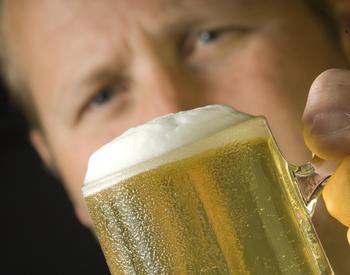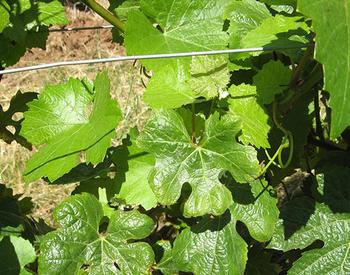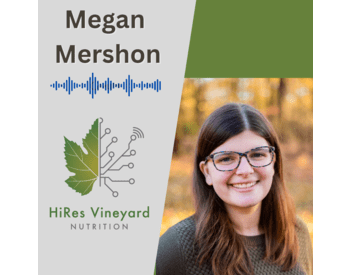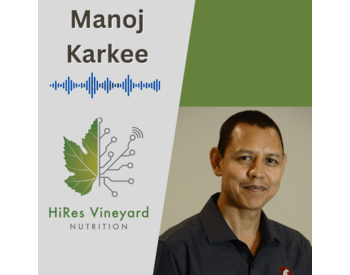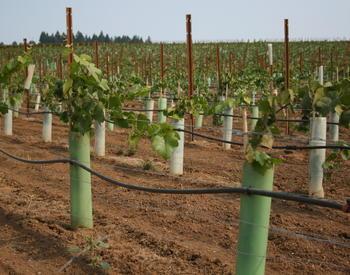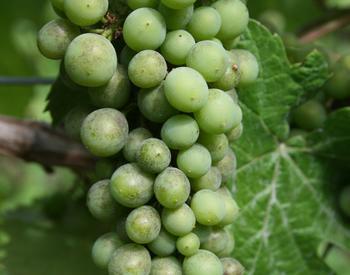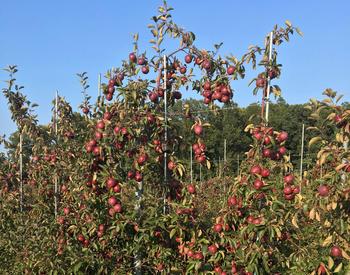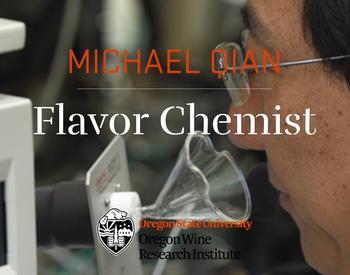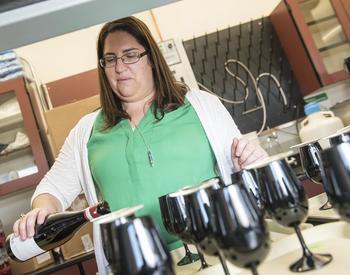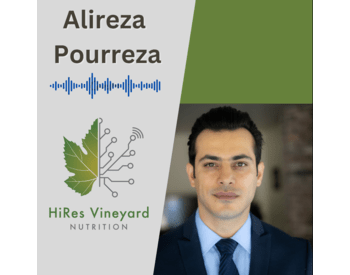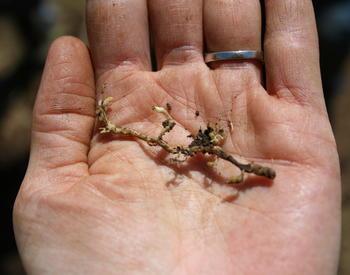Nutrient needs during wine fermentation
The process of winemaking depends on meeting the nutritional needs of yeast without producing off-aromas. Often, the grape berry contains enough nutrients for a successful fermentation. But some situations require nutrient supplementation at the winery.
Many conditions can cause nutrient deficiencies in grapes, including a lack of water and nutrients during the growing season. Deficiencies can become common during hot, dry growing seasons. These conditions often result in fruit with higher Brix content. This results in yeast needing to metabolize a greater amount of sugar with a lower amount of nutrients in a high-alcohol environment. The end result is often a slow, sluggish fermentation that stalls out with a few Brix remaining. We call this "stuck fermentation."
There are many potential causes of stuck and sluggish fermentations, including improper yeast hydration, temperature management, microbial competition and residual pesticides. Low nutrients and high alcohol content are two of the most common causes.
Yeast assimilable nitrogen
The major yeast nutrient we are concerned with in the grape is yeast assimilable nitrogen. YAN is composed of inorganic nitrogen (ammonia) and organic nitrogen (primary amino acids).
It is important to know the YAN level in fruit prior to fermentation so that you can make appropriate additions. Often, by the time you notice a problem fermentation, it is too late to add nutrients. This is because increasing ethanol concentrations hinder amino acid uptake late in fermentation.
You also do not want to add excessive nutrients at the beginning of fermentation. Large additions of nutrients early in the ferment may lead to overvigorous fermentations and alter the aroma compounds produced by the yeast. In addition, residual nutrients in the wine may contribute to microbial spoilage during aging.
So, how much YAN do you need? It depends. The general recommendation is between 120 and 220 mg/L for a 21 Brix must. If you have higher Brix must or are using a high nutrient demand yeast strain, you may want to consider higher YAN levels. These are not hard and fast rules. Many people may have no problems fermenting juice with much lower YAN levels, but researchers have found that these YAN levels result in fermentations with good kinetics.
Other nutrient needs
Aside from nitrogen, the other nutrients essential for yeast growth are the vitamins biotin, pantothenic acid and thiamin.
A simple method for analyzing these micronutrients does not exist, so the general rule is that if your grapes are low in nitrogen, they are probably also low in these compounds.
If you just want to increase YAN, then diammonium phosphate, or DAP, is an efficient way to accomplish this. However, DAP does not contain any micronutrients. So, in addition to DAP, you also should use a complex yeast nutrient that contains a blend of organic nitrogen (amino acids, peptides) and micronutrients.
A balanced approach of both DAP and complex nutrients works best if you need to significantly increase your YAN levels. If only a small adjustment is needed, then an addition of a complex yeast nutrient will usually suffice.
Carefully monitor and record nutrient additions, as there are legal limits to the concentrations that can be added. For example, there are limits to the amount of DAP (0.96 g/L), thiamin (0.60 mg/L) and pantothenic acid (0.048 mg/L) that can be added. For complex yeast nutrients, read the manufacturer’s instructions carefully to determine the maximum concentration of the product that can be added.
How to deal with stuck fermentations
While strategies such as nutrient additions are often the best way to prevent stuck fermentations, what can you do if you have a problematic fermentation that refuses to finish those last few Brix?
Just as there are a number of causes for stuck fermentations, there are also a few approaches to restart them. In general, these strategies entail building up a healthy population of a rescue yeast (typically a vigorous fermenting yeast) and slowly acclimatizing the yeast population to the stuck wine.
If you know the cause of the stuck fermentation, you can undertake specific strategies. For example, if the stuck ferment was caused by a high population of bacteria such as Lactobacillus, it may be necessary to add lysozyme. Often, an addition of yeast hulls is also recommended, as this may reduce inhibitory substances. See the following procedures for restarting stuck fermentations:
- Winery protocol for restarting a stuck fermentation (by Enartis)
- Good practices for restarting a stuck fermentation (by Lallemand)
- Recommended method to restart stuck fermentations (by Scott Lab)
- Video on how to restart a stuck ferment
These procedures follow the same general methods but recommend different commercial products to achieve similar goals. Carefully follow the manufacturer's recommended procedures.
Summary
- Warmer growing seasons can result in grapes with high Brix and low YAN that could result in stuck or sluggish fermentations.
- YAN assessment is crucial to determine appropriate nutrient additions.
- A balance of DAP and complex yeast nutrients is recommended to provide YAN and micronutrients.
- Yeast are unlikely to use nutrients added late in fermentation. Perform additions early and at 1/3 fermentation.
- Excessive use of nutrients can cause overvigorous fermentations and change aroma profile. There are legal limits for some nutrient additives.
- Restarting stuck fermentations involves treating wine with SO2, lysozome or yeast hulls if necessary, followed by preparation of a healthy rescue yeast population.
- Slowly add stuck wine to yeast preparation in a stepwise manner.
